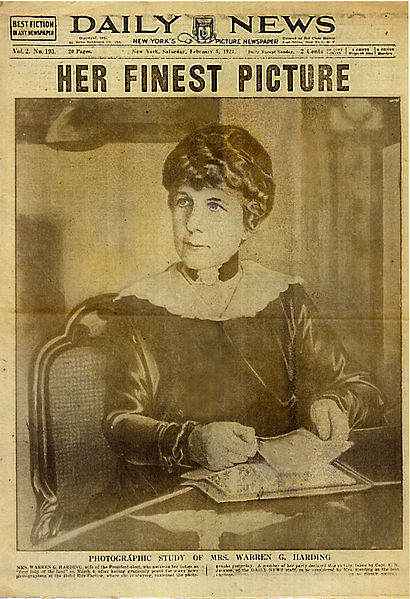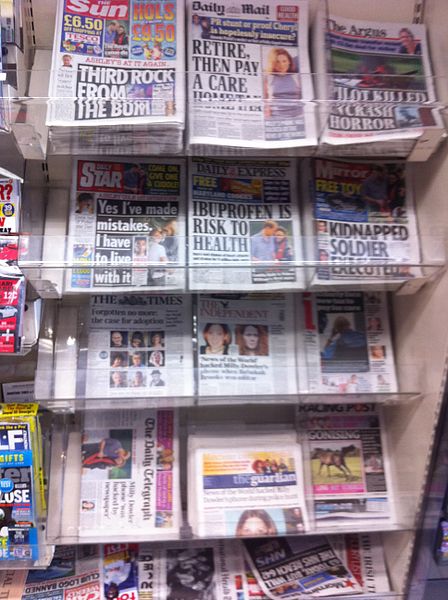Tabloid (newspaper format)
A tabloid is a newspaper with a compact page size smaller than broadsheet. There is no standard size for this newspaper format.
British tabloids in 2011
Tabloid products of the late 1880s
"A photographer's photographer" quote by First Lady Florence Harding, who stated the Edward Jackson's photograph of her was "the best photo ever taken." The photo ran on the entire front page of the February 5, 1921 edition of the New York Daily News.
Tabloid journalism is a popular style of largely sensationalist journalism which takes its name from the tabloid newspaper format: a small-sized newspaper also known as half broadsheet. The size became associated with sensationalism, and tabloid journalism replaced the earlier label of yellow journalism and scandal sheets. Not all newspapers associated with tabloid journalism are tabloid size, and not all tabloid-size newspapers engage in tabloid journalism; in particular, since around the year 2000 many broadsheet newspapers converted to the more compact tabloid format.
Display rack of British newspapers during the midst of the News International phone hacking scandal (5 July 2011). Many of the newspapers in the rack are tabloids.




